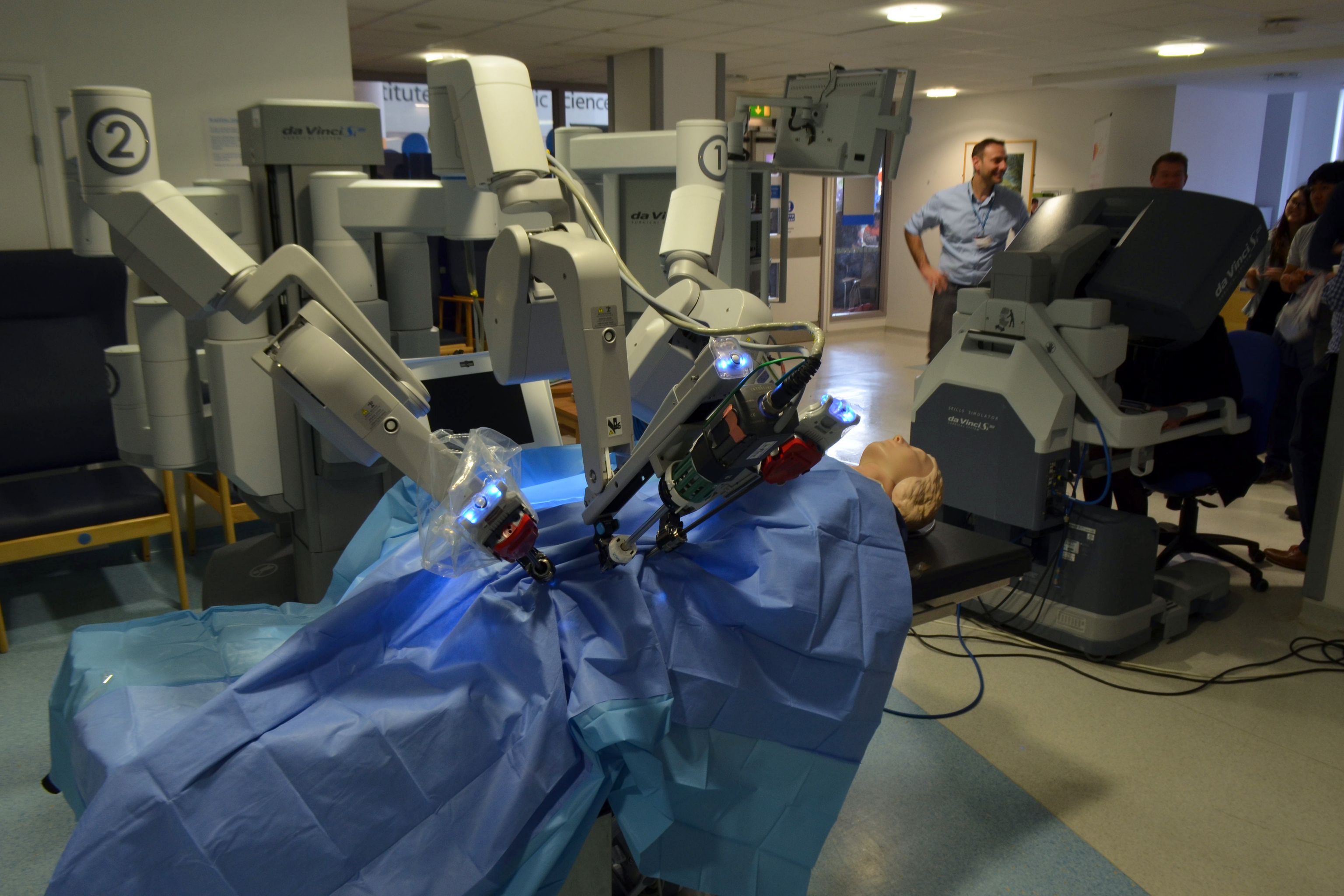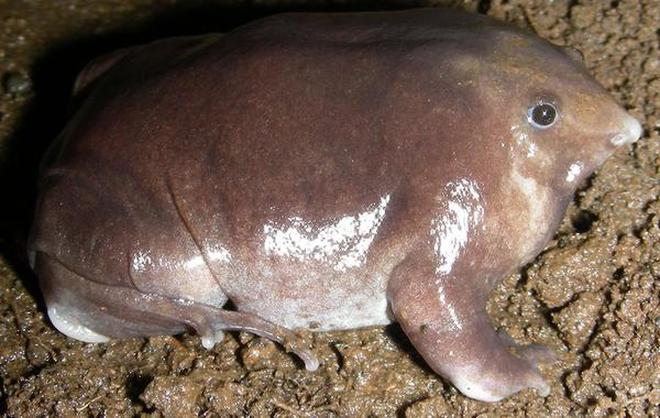1. Scientists discover new state of matter.
Scientists Los Alamos National Laboratory, US have discovered a potential new state of matter that may help explain phenomena like superconductivity.
It was discovered in the high-magnetic-field state of the heavy fermion superconductor CeRhIn5. Heavy fermions are intermetallic compounds, containing rare earth or actinide elements.
In the new state, material’s electrons are aligned in such a way, that they apparently reduce the symmetry of the original crystal. This appearance of electronic alignment in a prototypical heavy-fermion superconductor is called nematic behaviour. It is phenomenon of electronic symmetry breaking, common among the superconducting materials in high magnetic fields.
It highlights the interrelation of nematicity and unconventional superconductivity, suggesting that nematicity is common among correlated superconducting materials. It appears to be universal among unconventional superconductors. Unconventional superconductivity develops near a phase boundary separating magnetically ordered and magnetically disordered phases of a material.
>
/* Calculate the width of available ad space */
ad = document.getElementById(`google-ads-1`);
if (ad.getBoundingClientRect().width) {
adWidth = ad.getBoundingClientRect().width; // for modern browsers
} else {
adWidth = ad.offsetWidth; // for old IE
}
/* Replace ca-pub-XXX with your AdSense Publisher ID */
google_ad_client = "ca-pub-2551325655874098";
/* Replace 1234567890 with the AdSense Ad Slot ID */
google_ad_slot = "6713161600";
/* Do not change anything after this line */
if ( adWidth >= 728 )
google_ad_size = ["300", "250"]; /* Leaderboard 728x90 */
else if ( adWidth >= 468 )
google_ad_size = ["468", "60"]; /* Banner (468 x 60) */
else if ( adWidth >= 336 )
google_ad_size = ["336", "300"]; /* Large Rectangle (336 x 280) */
else if ( adWidth >= 300 )
google_ad_size = ["300", "300"]; /* Medium Rectangle (300 x 250) */
else if ( adWidth >= 250 )
google_ad_size = ["250", "250"]; /* Square (250 x 250) */
else if ( adWidth >= 200 )
google_ad_size = ["200", "200"]; /* Small Square (200 x 200) */
else if ( adWidth >= 180 )
google_ad_size = ["180", "150"]; /* Small Rectangle (180 x 150) */
else
google_ad_size = ["125", "250"]; /* Button (125 x 125) */
document.write (
``
);
(adsbygoogle = window.adsbygoogle || []).push({});
Superconductivity is the ability of certain materials to conduct electric current with practically zero resistance. For a material to behave as a superconductor, low temperatures are required i.e. they act as superconductors when they cooled below a characteristic critical temperature. Superconductivity was first observed in 1911 by H. K. Onnes, a Dutch physicist. Superconductivity is extensively used in magnetic resonance imaging (MRI), particle accelerators, magnetic fusion devices, microwave filters, high-speed magnetic-levitation trains, ultra-high-speed computer chips and high-capacity digital memory chips etc.
2. Versius: World`s smallest surgical robot developed by UK scientists.
 Scientists in the United Kingdom (UK) have developed the world’s smallest surgical robot called <strong>Versius</strong>. It was developed using low-cost technology used in mobile phones and space industries.
Scientists in the United Kingdom (UK) have developed the world’s smallest surgical robot called <strong>Versius</strong>. It was developed using low-cost technology used in mobile phones and space industries.
The robot can mimic human arm and can be used to carry out a wide range of surgical procedures. It can be controlled by a surgeon using a console guided by a 3D screen in the operating theatre.
Versius can make series of small incisions that will circumvent the need for traditional open surgery. These include colorectal operations, hernia repairs, as well as prostate, ear, nose and throat surgery. It is much easier to use than existing systems, and requires about a third of the space of current machines.
It works like a human arm and contains technology that detects resistance to make sure the right amount of force is used when the instruments are inside the patient.
It can help to reduce complications and pain after surgery and speed up recovery time for patients.
3. Scientists discover new therapy to prevent sepsis in new born babies.
 A team of scientists from US have discovered an inexpensive prevention technique (therapy) against sepsis in new born babies. The team was led by US-based Indian doctor Dr Pinaki Panigrahi.
A team of scientists from US have discovered an inexpensive prevention technique (therapy) against sepsis in new born babies. The team was led by US-based Indian doctor Dr Pinaki Panigrahi.
The therapy has been found to reduce the risk of sepsis infection by 40% in trials and it can be inexpensive – less than one dollar for a course.
Need
Each year globally, more than 600,000 infants die of sepsis most of them in developing countries. In India, more than a quarter of neonatal deaths are due to sepsis. In a significant number of these cases, the infection probably begins in the gut.
New prevention technique
>
/* Calculate the width of available ad space */
ad = document.getElementById(`google-ads-1`);
if (ad.getBoundingClientRect().width) {
adWidth = ad.getBoundingClientRect().width; // for modern browsers
} else {
adWidth = ad.offsetWidth; // for old IE
}
/* Replace ca-pub-XXX with your AdSense Publisher ID */
google_ad_client = "ca-pub-2551325655874098";
/* Replace 1234567890 with the AdSense Ad Slot ID */
google_ad_slot = "6713161600";
/* Do not change anything after this line */
if ( adWidth >= 728 )
google_ad_size = ["300", "250"]; /* Leaderboard 728x90 */
else if ( adWidth >= 468 )
google_ad_size = ["468", "60"]; /* Banner (468 x 60) */
else if ( adWidth >= 336 )
google_ad_size = ["336", "300"]; /* Large Rectangle (336 x 280) */
else if ( adWidth >= 300 )
google_ad_size = ["300", "300"]; /* Medium Rectangle (300 x 250) */
else if ( adWidth >= 250 )
google_ad_size = ["250", "250"]; /* Square (250 x 250) */
else if ( adWidth >= 200 )
google_ad_size = ["200", "200"]; /* Small Square (200 x 200) */
else if ( adWidth >= 180 )
google_ad_size = ["180", "150"]; /* Small Rectangle (180 x 150) */
else
google_ad_size = ["125", "250"]; /* Button (125 x 125) */
document.write (
``
);
(adsbygoogle = window.adsbygoogle || []).push({});
In the new oral prevention technique, infants are fed with good bacteria (probiotic bacteria) that populates in his/her gut and block (kill) harmful bacteria. The probiotic bacterial strain is also aided with a non-absorbable sugar to enhance its ability to effectively colonize the gut.
Researchers call it as probiotic-sugar combination, a symbiotic. The oral therapy starts during day 2-4 of life, as a preventive measure, much like a vaccine. The technique is also found beneficial in reducing lower respiratory tract and other infections and also improving immunity status.
Sepsis
Sepsis is a life-threatening illness primarily caused by bacterial infections that spreads fast through the blood leading to organ failure. It is caused by an immune response triggered by an infection i.e. body’s response to infection causes injury to its own tissues and organs. Sepsis infections are also more common in elderly people and those with a weak immune system.
Common signs and symptoms include fever, increased heart rate, increased breathing rate, and confusion. There also may be symptoms related to a specific infection, such as pneumonia, kidney infection blood infection and abdominal infection. Currently, no efficient means of prevention is available.
4. New frog species with pig face discovered in Western Ghats.

Indian scientists have discovered Nasikabatrachus bhupathi, a new species of frog that has a snout-shaped nose, just like a pig in West Ghats. It has been named after the Indian herpetologist S. Bhupathy.
Nasikabatrachus bhupathi species show comparisons with the Purple frog (Nasikabatrachus sahyadrensis) which was discovered in 2003 in Seychelles.
Nasikabatrachus bhupathi
Nasikabatrachus bhupathi is soiled-dwelling species of purple frog. It inhabits the eastern slopes of the Western Ghats, near the Srivilliputhur Grizzled Giant Squirrel Wildlife Sanctuary in Tamil Nadu.
>
/* Calculate the width of available ad space */
ad = document.getElementById(`google-ads-1`);
if (ad.getBoundingClientRect().width) {
adWidth = ad.getBoundingClientRect().width; // for modern browsers
} else {
adWidth = ad.offsetWidth; // for old IE
}
/* Replace ca-pub-XXX with your AdSense Publisher ID */
google_ad_client = "ca-pub-2551325655874098";
/* Replace 1234567890 with the AdSense Ad Slot ID */
google_ad_slot = "6713161600";
/* Do not change anything after this line */
if ( adWidth >= 728 )
google_ad_size = ["300", "250"]; /* Leaderboard 728x90 */
else if ( adWidth >= 468 )
google_ad_size = ["468", "60"]; /* Banner (468 x 60) */
else if ( adWidth >= 336 )
google_ad_size = ["336", "300"]; /* Large Rectangle (336 x 280) */
else if ( adWidth >= 300 )
google_ad_size = ["300", "300"]; /* Medium Rectangle (300 x 250) */
else if ( adWidth >= 250 )
google_ad_size = ["250", "250"]; /* Square (250 x 250) */
else if ( adWidth >= 200 )
google_ad_size = ["200", "200"]; /* Small Square (200 x 200) */
else if ( adWidth >= 180 )
google_ad_size = ["180", "150"]; /* Small Rectangle (180 x 150) */
else
google_ad_size = ["125", "250"]; /* Button (125 x 125) */
document.write (
``
);
(adsbygoogle = window.adsbygoogle || []).push({});
It differs from the Purple frog morphologically and acoustically. It is dark brown in colour and each of its calls consists of four distinct pulses while the Purple frog pauses once between its three-pulse-call.
Significance of Discovery
The discovery is significant as it constitutes additional evidence in favour of the continental drift theory. The Purple frog inhabitant of Seychelles, and discovery of Nasikabatrachus bhupathi in India suggests that Indian subcontinent was part of ancient landmass of Gondwana before splitting from Seychelles 65 million years ago.